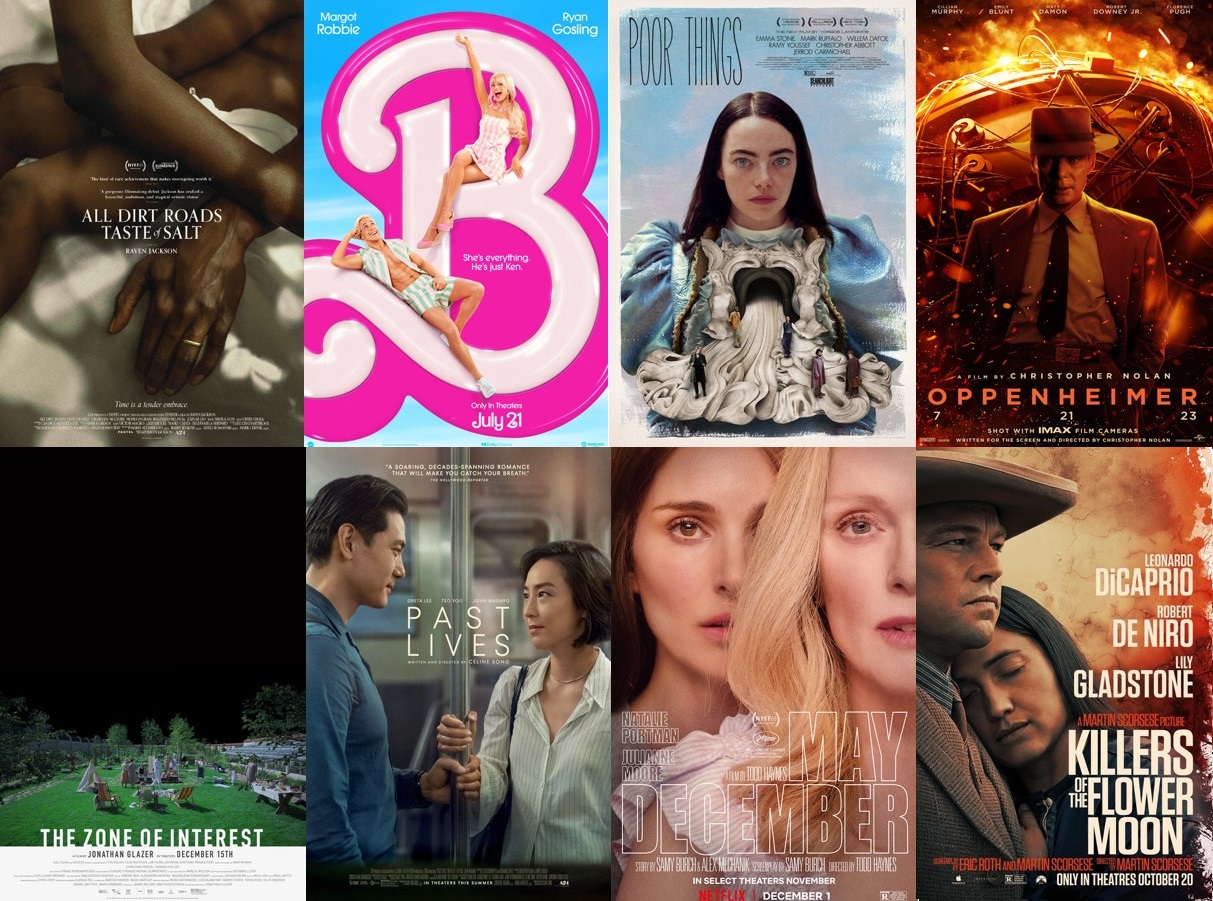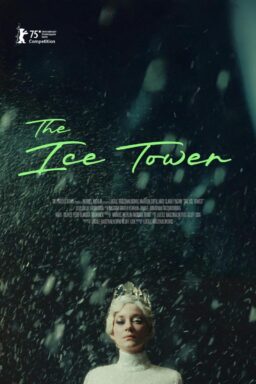How does one sum up a year that felt as tumultuous and unpredictable as 2023? It honestly did feel like an artistic turning point as franchises once deemed too big to fail fell apart, giving way to unpredictable blockbusters and heartfelt cinematic statements from some of the world’s best filmmakers. The list below is really a portrait of the year, one in which two debut films stand alongside works from acknowledged masters. A list that includes films that made millions of dollars alongside ones that are only now building an audience. A list that travels the world to elevate stories that resonate with universal truth and undeniable specificity at the same time. These are the films selected by the regular film reviewing staff of RogerEbert.com as the best of the year. Come back on Thursday to see the specific lists of all of the regular critics, plus those from our extended family of contributors. And click through on the links below, when available, to watch the best films of 2023.
Runner-ups: “About Dry Grasses,” “All of Us Strangers,” “Anatomy of a Fall,” “The Boy and the Heron,” “Fallen Leaves,” “Godland,” “Kokomo City,” “Priscilla,” “Spider-Man: Across the Spider-verse,” and “A Thousand and One“
10. “All Dirt Roads Taste of Salt“
Watching Raven Jackson‘s debut feature film, “All Dirt Roads Taste of Salt” (produced by Barry Jenkins and developed through the Indie Memphis Black Filmmaker Residency for Screenwriting), is one of those startling cinematic experiences calling into question how filmmakers typically tell stories. We don’t realize the dominance of visual cliches until a filmmaker comes along and does it her own way. Chantal Akerman did it with “Jeanne Dielman, 23 quai du Commerce, 1080 Bruxelles,” Julie Dash did it with “Daughters of the Dust,” Lynne Ramsay did it with “Morvern Callar“. Their cinematic language is as distinct as a fingerprint.
The kaleidoscope of images in “All Dirt Roads Taste of Salt” shows the past existing alongside the present, memories bleeding forwards and backwards. Repeating sensory motifs rush forth in this story of a young girl growing up in the rural South: hands touching the dirt, preparing a fishhook, braiding hair, trailing through the river water, a mother’s hands washing her daughter’s back, loved ones clasped in wordless embraces. You get to know everyone through their hands, as radical a style as Terrence Malick’s sunlight-through-tree-leaves and whispering voiceovers. “All Dirt Roads Taste of Salt” is a kinesthetic experience. You see smells, feel sounds, dirt roads are to be tasted. Of course, Jackson also gives us memorable characters, steeping us in the family’s grief and joy, loss and sweetness.
Raven Jackson is also a published poet. One of her poems, “After the Fire,” opens with:
Plants Mama should have swallowed as seeds
swelled from mud like legs.
She’d sit on the porch, a green jar of pickles
bouncing on her knees, tires
eating stone.
The sensibility of “All Dirt Roads Taste of Salt” are in those evocative words. Jackson has made a film only she could make. It can’t be duplicated. It is hers and it is to be treasured. (Sheila O’Malley)
Now streaming on:
9. “Are You There, God? It’s Me, Margaret.”
Sincerity is what shines through brightest in “Are You There God? It’s Me, Margaret.”
Adapting a book that’s meant so much to so many for so long might have been a daunting task, but writer/director Kelly Fremon Craig tapped into the truth in Judy Blume’s classic and treated it with the complete respect it deserves—not reverence, mind you, because she made a few tweaks to inventively expand the beloved story. Those changes only made the experience richer, more emotional and hilarious, with moving results.
What’s so enduring about the film, and the 1970 coming-of-age novel that inspired it, is its relatability across generations. When I read the book as a tween, I saw myself in 11-year-old Margaret (played with awkward charm and deep authenticity by Abby Ryder Fortson) as she navigated the many obstacles of adolescence. When I watched the movie as an adult—as the mother of a teenager—I saw myself in Margaret’s mom, Barbara, as she did her best to guide her child through this hormonal minefield. Rachel McAdams gives the best performance of her lengthy and varied career here: She’s earthy, funny, sexy and heartbreaking. The supporting performances that get a lot of attention during awards season tend to be the big, showy ones, but what McAdams is doing here is exquisitely subtle in every moment.
The whole cast is terrific, including Benny Safdie as Margaret’s sweetly dorky dad, Kathy Bates as her quick-witted grandmother and Elle Graham as the frenemy who’s more complicated than she initially seems. These all feel like real, interesting people in a real, lived-in place. That’s one of the other miracles about “Margaret”: the way it vividly depicts its 1970s setting without going over the top into period kitsch (thanks to the detailed work of production designer Steve Saklad.) In a movie in which couch shopping serves as a symbolic subplot, “Margaret” lets you sink into a familiar feeling of comfort. (Christy Lemire)
Now streaming on:
8. “Barbie“
For once, the advertising tagline got it exactly right: “If you love Barbie, this movie is for you. If you hate Barbie, this movie is for you.”
Barbie encompasses multitudes because she reflects all of the conflicted feelings that we have about who we want to be. Is she empowering because there is a Barbie in every possible aspirational profession or is she dooming us to despair because we can never live up to her airbrushed pink perfection? America Ferrara’s frustrated speech about the impossible standards expected of women encapsulates many of the movie’s themes.
But, like Barbie herself, the film is irresistibly enticing, with gorgeous settings and delightful songs. In Barbie world, every day is perfect, and all problems are solved—for the Barbies. The smart script by Noah Baumbach and director Greta Gerwig shows us that characters can be isolated and unsatisfied even in an outwardly perfect world. We can laugh at the insecurity of Ryan Gosling’s pitch-perfect Ken or the played-with-too-hard but somehow therefore wiser Weird Barbie, but they demonstrate the intensity of the wishes we project onto our toys. Then there’s the unloved Allan and quickly discontinued puberty Skipper, to remind us that as much as we may decry the commercialism of dolls like Barbie, consumers cannot be persuaded to buy everything corporations think up. The movie is so much fun it is easy to overlook how smart it is about humans and how our toys help us define our dreams. (Nell Minow)
Now streaming on:
7. “Poor Things“
A sexually liberated, lightly sci-fi Art Nouveau period piece is strange enough on paper. Filter that concept through the stylized performances and aggressive fisheye lensing of Yorgos Lanthimos, and you’ve got a true oddity of a film. “Poor Things” isn’t weird just to be weird, however. Every eccentric touch, from the anachronistic costuming to fairytale settings that unfurl like the pages of a pop-up book, reflect a stage in the evolution of our heroine, Bella Baxter (Emma Stone), from the reanimated corpse of a suicidal London housewife to a feminist firebrand and a true woman of the world. Bella is a singular force, and the world around her reflects that.
In a lesser actor’s hands, an environment this fantastic might threaten to swallow a character. But Emma Stone’s performance unfolds in stages, too, from the hesitant movements and sudden flashes of understanding of a newborn baby to the cool, bemused confidence of an undaunted woman. The men around Bella all exist on a spectrum, from Jerrod Carmichael’s hardened cynic to Mark Ruffalo’s hilariously fragile lothario who’s finally been beaten at his own lusty game. And each of them has something to teach Bella, although her journey—and “Poor Things,” for all of its much-ballyhooed sex scenes—isn’t really about them. Bella, being a Frankenstein’s monster type, doesn’t have a soul to worry about. And her explorations and adventures are free from the conventional restraints of Judeo-Christian morality. What is the journey of life all about without a God to lead the way? Let Bella Baxter show you. (Katie Rife)
Now streaming on:
6. “The Zone of Interest”
In recent interviews, Jonathan Glazer, the writer and director of the eerie, cold-blooded Holocaust drama “The Zone of Interest,” sometimes emphasizes how unsure he was, both about what motivated him as well as if he could even complete the project. You might be uncertain, too, if you chose to make a disturbing fictional drama—and sometimes black comedy—about real-life Nazi Commandant Rudolf Höss (Christian Friedel) and his wife Hedwig (Sandra Hüller), who lived with their family in a well-maintained home at the Auschwitz concentration camp, with a vegetable garden and a pool.
“I genuinely don’t know why it’s in me,” Glazer told Screen Daily’s Mark Salisbury. “There must be something in it that’s driving me forward. And often I’m not even sure what that is.” In pursuing his artistic compulsions, Glazer has captured the surreal disconnect between the life that the Hösses clearly preferred to be living and the one that was literally outside their door.
Glazer’s cast sometimes improvised with his encouragement. They were also filmed by Polish cinematographer Łukasz Żal, mostly with ten hidden cameras. The soundtrack, featuring a nightmarish sound design by Johnnie Burn and a typically bracing score by Mica Levi, adds another layer of disorienting, hyper-real dissonance.
The point of “The Zone of Interest” may be to confront us with its grotesque, bourgeois protagonists’ behavior, but the resulting drama often feels like a Kubrickian horror movie about the divide between what we recognize as human and what we’d rather not think about. (Simon Abrams)
Now streaming on:
5. “Asteroid City“
In the second half of his nearly 30-year career, Wes Anderson has continued to refine and evolve his style, often by taking lessons that he learned while directing animated movies (“The Fantastic Mr. Fox,” “Isle of Dogs”) and applying them to his live-action projects, which increasingly embrace a not-meant-to-be realistic, almost-storybook aesthetic (“Moonrise Kingdom,” “The Grand Budapest Hotel,” “The French Dispatch”). He’s become more formally radical with each new project, using framing devices, multiple narrators, nods to other media, and other techniques to comment on storytelling at the same time that he tells the audience a story. That the story is often quietly devastating is a testament to Anderson’s understanding of his own methods—you’d think that a director who conspicuously foregrounds his technique would be incapable of moving audiences, yet here we are, wiping a tear away. “Asteroid City” might be the most innovative and quietly mysterious film Wes Anderson has ever made.
It alternates a 1950s, black-and-white, squarish-format “televised theater” production (about the short life of a playwright who never finished a play titled Asteroid City) with a widescreen Technicolor-ish fable, also called “Asteroid City,” set on a military base that gets locked down due to an extraterrestrial visitation, trapping a group of genius kids and their parents. The dialogue and production design amount to a cinematic encyclopedia of mid-20th century art and pop culture references, from the New York Method school of theater and the heyday of live TV drama to the “spiritual death in small-town America” genre of fiction, theater and film drama, represented by touchstones like “The Misfits,” “Picnic,” and “The Last Picture Show”. As the movie unfolds, the viewers begin to realize that neither the black-and-white nor the color sections are intended as “reality,” and that they aren’t going to get any explanations or summations, or for that matter, any hand holding at all. It’s up to you to meet the film halfway, give yourself over to it, and make it make sense to you, on your own level and in your own way. You know, art. (Matt Zoller Seitz)
Now streaming on:
4. “May December“
It’s fascinating to watch people try to put Todd Haynes’ latest masterpiece in a box. Is it camp? Is it a drama? A comedy? There’s almost a meta level to this conversation because it’s a film about an actress who thinks she can put people in a box too. The Juilliard trained Elizabeth Berry (Natalie Portman) comes to visit a woman named Gracie (Julianne Moore), who she thinks she’s figured out by researching her crime and its tabloid coverage. The lesson of “May December” is that no one is that easy, especially people who don’t operate in what we would call the normal world.
Much has been made of Charles Melton’s brilliant turn as a man named Joe caught in a vulnerable eternal adolescence because he was forced to grow up too quickly, but Moore’s predator is just as removed from reality as she manipulates her husband and her children constantly for her own selfish needs. These are people moving in emotional quicksand—Joe reaches for any branch that could pull him out while Gracie pushes away any potential safety for either of them.
The fact that Elizabeth ends the film with no better understanding of Gracie and Joe than when she arrived in Georgia is essential to this film’s success and the daring tone of Samy Burch’s script, the year’s best. No wonder she can’t figure out who Gracie and Joe are—they have no idea themselves. (Brian Tallerico)
Now streaming on:
3. “Oppenheimer“
Christopher Nolan’s epic follows its titular character, J. Robert Oppenheimer (Cillian Murphy), through the creation of the atomic bomb during World War II. As Oppenheimer trudges through scientific discovery and battles of ideology and ambition, what ensues is a three-hour orchestra of personal and professional histories, troubling tangos of guilt and pride, and a novel look at the horrors of war. “Oppenheimer” is both a searing political portrait of the United States colonial machine and a damning dossier of its titular character’s actions and interiority.
Nolan’s filmmaking is trademarked by his penchant for grand-scale storytelling. Through each second of its extensive runtime, “Oppenheimer” delivers feats of narrative, performance, cinematography, and, ultimately, pathos. It’s a mammoth film, spanning multiple timelines and a broad array of characters. Yet there’s not a single detail within its complex and wide-ranging web that feels extraneous. And this is not only a testament to the mastery of Nolan’s writing, but also a deeply emotional consequence of how one of history’s most notorious events had no small players.
There are shots in “Oppenheimer” that should never be forgotten. Intense portraiture backed by an award-worthy performance from Murphy is now woven into this year’s filmic memory. With various tensions building on every side of its story, Nolan doesn’t cast his lead in a definitive light, allowing the audience to engage with history and draw their own impossible conclusions. Questions of discovery and culpability collide with fierce uncertainty in “Oppenheimer,” a staggering achievement in character, context, and execution. (Peyton Robinson)
Now streaming on:
2. “Past Lives“
There is a knowing slipperiness to writer-director Celine Song’s debut “Past Lives.” Though Nora (Greta Lee) and her family leave South Korea, moving away from her childhood best friend Hae Sung (Teo Yoo), this film is not about immigration. Though Nora and Hae reconnect years later via Skype, this film is not about longing. And even though Hae eventually ventures to New York City for one last chance with Nora—despite Nora being married to Arthur (John Magaro)—this, dismayingly, is not a romance. Desire without lust; flirtation without consummation; these are the ambiguities that some have assumed are pesky glitches rather than intentional features.
It’s why I cringe whenever I see someone refer to “Past Lives” as a love story. It’s not, and knowingly so. Because “Past Lives” works on a far trickier, subtler spectrum than many have interpreted. This is a film about the act of mourning. Its complications arise not from a character discovering the inevitable; but from them grieving the unavoidable. Within that tight boundary, imposed by Song, an aching Yoo and a tender Magaro must navigate a frightening uncertainty: What if the woman they love adores another? Lee’s Nora, of course, is wrestling with a separate, abstract struggle. She is in a different film, a different time, and unlocking a different deadlock—balancing losing what she never had and what she may never experience. “Past Lives” is Nora’s elegy for her past, present, and future. It’s a film whose poeticism is written in the finite space between acquiescence and acceptance and in the tension between a creator’s desire to depict her life’s reality and in the daydream possibility film so often demands. (Robert Daniels)
Now streaming on:
1. “Killers of the Flower Moon“
Martin Scorsese’s monumental adaptation of David Grann’s non-fiction bestseller contains a bounty of viewing pleasures, but in the main it is something like an anti-entertainment. For the first two hours or so of its 206-minute running time, Scorsese forges a form of slow cinema. The machinations and sins of Ernest Burkhart and William “King” Hale (Scorsese stalwarts Leonardo DiCaprio and Robert De Niro) are laid out in studious and merciless detail, and often conveyed in static-camera tableaux that evoke not just Griffith and DeMille but Straub and Huillet. The crimes against the Osage Nation members who were the rightful owners of oil-rich Oklahoma land are committed in practically plain sight, and with almost droning repetition. Why isn’t anybody doing anything? Well, yes, that’s a good question.
Whether you think Scorsese is making you uncomfortable in order to contend with man’s inhumanity to man or to make you undergo a form of white guilt depends on where your head is at, and your response might not be the one you’d prefer. It’s all about the perspectives the filmmaker chooses. Lily Gladstone’s performance as Mollie is a sonata of stillness and indignation—“No investigation,” a reprise repeated in voiceover early in the film, is said with her voice—and Mollie’s kiss-off of Ernest is the greatest of its kind since Alida Valli walked away from Joseph Cotten in “The Third Man.” But while in “The Third Man,” the viewer gets to digest the look of utter disdain on Valli’s face as she walks on by, here we don’t have the option of sharing any kind of satisfaction or vindication with Mollie. Here, as all through the movie, form serves function. Because Mollie isn’t merely walking away from Ernest but from us. We are obliged to sit with Ernest in his befuddlement, and with the subsequent knowledge that this criminal will, in real life, die a free man, as will his mentor in murder. (Glenn Kenny)
Now streaming on:











